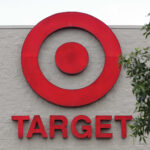Potential dangers lurk inside a house or other structure after a hurricane. Most people are aware of the problems mold causes but many forget about safety issues and precautions that should be taken before and during the clean up process.
“Safety is essential to all aspects of recovery,” said Nick Russo, federal coordinating officer for the Mississippi disaster. “We encourage Mississippians to continue to be careful when cleaning in and around their homes and nearby structures. Besides saving lives, it just makes good sense.”
The Centers for Disease Control and Prevention (CDC) advises hurricane victims to take precautions as they clean up and move forward in the recovery process.
Before turning on power, the CDC recommends checking with an electrician to verify everything is in working order. If it is, enter the house briefly to open doors and windows to let it air out for at least 30 minutes before spending any length of time there.
If electricity is not available and a generator is needed, it should not be operated inside a home, basement, garage, carport, porch or other enclosed or partially enclosed structures, even if the windows and doors are open. Such improper use can create dangerously high levels of carbon monoxide, causing carbon monoxide poisoning.
People focus on mold as the problem after a house has been flooded, yet there is also the possibility of contamination with sewage. Gloves and other protective clothing should be used and children should be kept away while cleaning. If items such as mattresses and stuffed toys are contaminated, they should be discarded.
Tackle mold wearing gloves, a face mask and protective goggles. The CDC recommends everyone avoid unnecessary exposure; it also warns some people completely avoid mold such as children under 12, transplant recipients, cancer patients undergoing chemotherapy and people with human immunodeficiency virus (HIV).
Have a qualified professional check out and clean the home heating, ventilating, and air-conditioning (HVAC) system for mold. If the system is contaminated, it will spread mold throughout the house when it is turned on. Professional cleaning will kill the mold and prevent its later growth. When the service determines your system is clean, and it is safe to do so, turn it on to help remove excess moisture from your home.
While mold is dangerous, the most common agents used to get rid of it, bleach and ammonia, pose their own risks. If the two are mixed, a chlorine gas is released, toxic in any environment but particularly deadly in an unventilated room.
“One cup each, mixed together, could be lethal,” said Bill Ringo, FEMA’s safety officer for the Mississippi disaster. “FEMA suggests hiring a professional to take care of the big [mold cleanup] jobs. If mold is on the ceiling and high up on the walls, call in the experts.”
For more information, call 1-800-CDC-INFO; Email: cdcinfo@cdc.gov; visit: www.cdc.gov or www.fema.gov.
Was this article valuable?
Here are more articles you may enjoy.

 Nearly 1,000 Feared Dead After Cyclone Hits France’s Mayotte
Nearly 1,000 Feared Dead After Cyclone Hits France’s Mayotte  Amazon Ignored Its Own Worker Safety Studies, Senate Report Says
Amazon Ignored Its Own Worker Safety Studies, Senate Report Says  Target Must Face Shareholder Lawsuit Over Pride Backlash, US Judge Rules
Target Must Face Shareholder Lawsuit Over Pride Backlash, US Judge Rules  Jane Street-Millennium Trade Secrets Fight Ends in Settlement
Jane Street-Millennium Trade Secrets Fight Ends in Settlement 